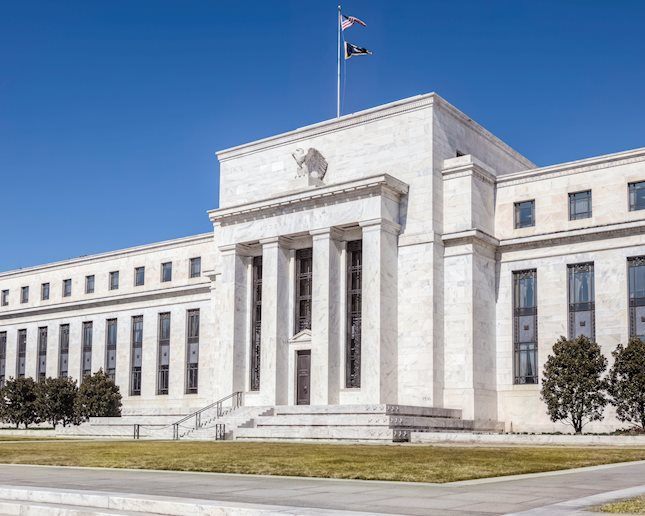We kicked off the new week with renewed demand for US assets. The S&P 500 extended last week's gains as the greenback traded higher against all of the major currencies. By sparing Mexico punitive tariffs and US corporations, a major threat to earnings, the immigration agreement between the US and Mexico provided a big boost for risk appetite. The US dollar benefitted the most because next to Mexico, the threat to the US economy or corporate earnings was the greatest risk. While this deal eases concerns about the US economy's second half performance, we believe that the dollar will fall further in the coming days and weeks.
#1 - First and foremost, Mexico's foreign minister said on Monday that the "fully signed and documented agreement" touted by President Trump does not exist. He said there is an understanding that migrant flow will be evaluated and discussions about more material changes will be held if the number of migrants is not significantly reduced. This ambiguity means ongoing uncertainty because President Trump is known for playing to the market's desire so the possibility of a false claim means that the risks of tariffs on Mexican imports still exist.
#2 - Secondly, the US economy is slowing. Job growth last month was significantly lower than expected and we are looking for this week's inflation and retail sales reports to miss because oil and gas prices are falling and the labor market is weakening.
#3 - Third, the biggest revelation last week came not from data but the central bank.Federal Reserve Chairman Powell said they are closely monitoring the implications of the US' trade disputes on the economy and "will act as appropriate to sustain the expansion." While he didn't explicitly use the words rate cut, it is clear that he's talking about easing monetary policy. Stocks soared, yields fell and the US dollar crashed. Fed fund futures are currently pricing in 94% chance of an interest rate cut in September. A move this soon would be unrealistic but the Fed Chair's dovish comments should usher in a new wave of US dollar weakness. The greenback hit multi-month highs against many major currencies in 2019 and this comment is significant enough to trigger a sustainable and widespread short squeeze in high beta currencies especially after last week's disappointing non-farm payrolls report.
Technically it should only be a matter of time before USD/JPY slips back below 108. EUR/USD is our favorite high beta currency because the ECB ruled out a rate cut last week. So minimally, we expect a move above 1.1350.
Meanwhile the weakest currencies today were the New Zealand and Australian dollars. China's trade surplus increased more than expected but the rise was largely due to a sharp drop in imports. Exports increased but wqs due to businesses preempting tariffs by accelerating shipments. Either way, the outlook for US-China relations is grim. Just today, President Trump warned that if China doesn't come to G20, tariffs would go on immediately. While Xi could attend the meeting, he may not agree to a sit down with President Trump if the outcome is unknown. Sterling also came under selling pressure following softer GDP and industrial production numbers. UK labor market numbers are scheduled for release tomorrow and given the drop in manufacturing and construction sector jobs, the risk is to the downside for this release.
Past performance is not indicative of future results. Trading forex carries a high level of risk, and may not be suitable for all investors. The high degree of leverage can work against you as well as for you. Before deciding to trade any such leveraged products you should carefully consider your investment objectives, level of experience, and risk appetite. The possibility exists that you could sustain a loss of some or all of your initial investment and therefore you should not invest money that you cannot afford to lose. You should be aware of all the risks associated with trading on margin, and seek advice from an independent financial advisor if you have any doubts.
Recommended Content
Editors’ Picks

EUR/USD stays around 1.0300 ahead of FOMC Minutes
EUR/USD stays under heavy selling pressure and trades around 1.0300 on Wednesday. News of US President-elect Donald Trump planning to declare an economic emergency to allow for a new tariff plan weighs on risk mood. US ADP misses expectations with 122K vs 140 anticipated.

GBP/USD drops to fresh multi-month lows, hovers around 1.2350
GBP/USD remains on the back foot and trades at its weakest level since April, around 1.2350. The risk-averse market atmosphere on growing concerns over an aggressive tariff policy by President-elect Donald Trump drags the pair lower as focus shifts to US FOMC Minutes.

Gold pressures fresh multi-week highs
Gold price (XAU/USD) advances modestly in a risk-averse environment. The benchmark 10-year US Treasury bond yield holds at its highest level since late April near 4.7%, making it difficult for XAU/USD ahead of FOMC Minutes.

Fed Minutes Preview: Key Insights on December rate cut and future policy plans
The Minutes of the Fed’s December 17-18 policy meeting will be published on Wednesday. Details surrounding the discussions on the decision to trim interest rates by 25 basis points will be scrutinized by investors.

Bitcoin edges below $96,000, wiping over leveraged traders
Bitcoin's price continues to edge lower, trading below the $96,000 level on Wednesday after declining more than 5% the previous day. The recent price decline has triggered a wave of liquidations across the crypto market, resulting in $694.11 million in total liquidations in the last 24 hours.

Best Forex Brokers with Low Spreads
VERIFIED Low spreads are crucial for reducing trading costs. Explore top Forex brokers offering competitive spreads and high leverage. Compare options for EUR/USD, GBP/USD, USD/JPY, and Gold.